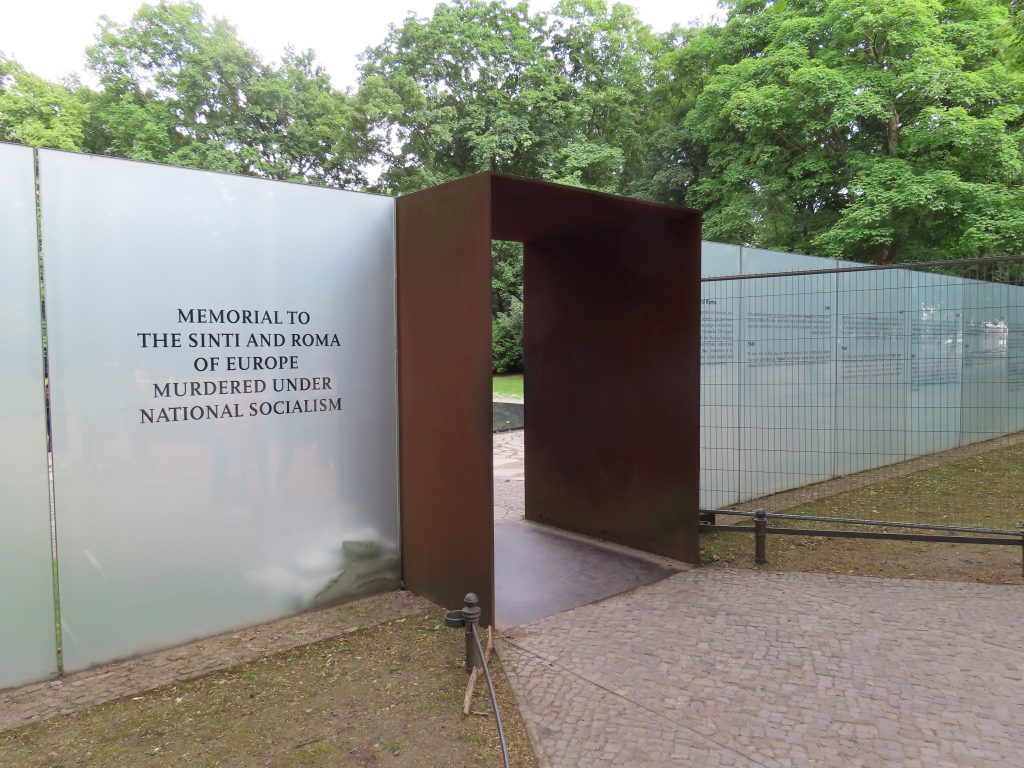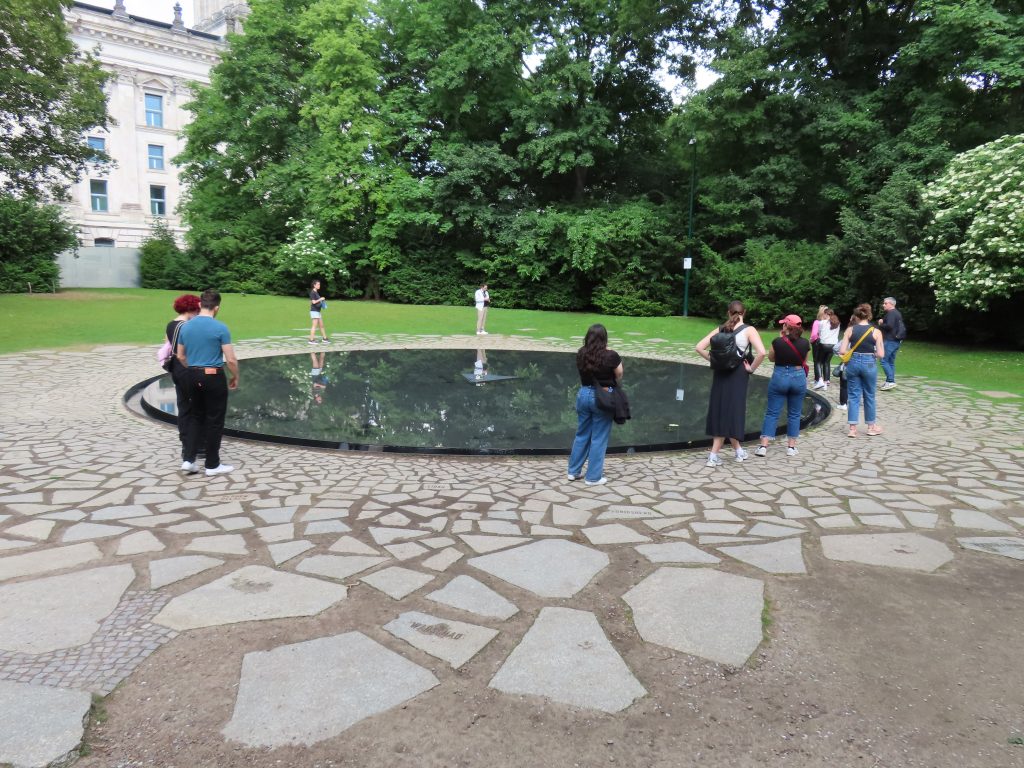
This memorial, which is tucked away in the middle of Berlin is blocked away from the rest of the city by walls of glass. Walking up to the memorial, you are presented with a wall of information on the persecution of the Sinti and Roma as well as the process to get them recognized as a victim group of national socialism. A short animated video testimony is also playing on a loop outside the space. Inside, there is the main reflecting pool, surrounded by stones with the names of the locations where the Sinti and Roma were murdered. This space, unlike the other memorials, is quiet. Other than the violin music playing and the faint sounds of construction, no children are running around, no one is sitting having a picnic, and nothing “disrespectful” is happening in this space.

The sombre feeling that one can experience in this space, as opposed to others, shows us the importance of design in creating these spaces of memory. This memorial, while being in a central location, is isolated away from the city and surrounded by nature. You are forced to interact and reflect on the memorial because it is the only thing within the space to interact with. When you are done with your reflection or observation, you then leave the space behind. This site has clear boundaries, and while the information section is on the outside of the memorial, it too is secluded off to the side of the walking path.
I think that this shows how important design is when getting people to interact with memorial sites. This memorial is only a few blocks away from the Memorial to the Murdered Jews of Europe, yet how people interaction with the space is so different. This space is clearly labelled, which is not true for a lot of sites we visited. It is also secluded away from the normal activity of the city so people don’t interact with it as often. While you can argue over the pros and cons of its isolation, the visitor behaviour, at least from what I saw, was much more informed and reflective than any other site I visited.